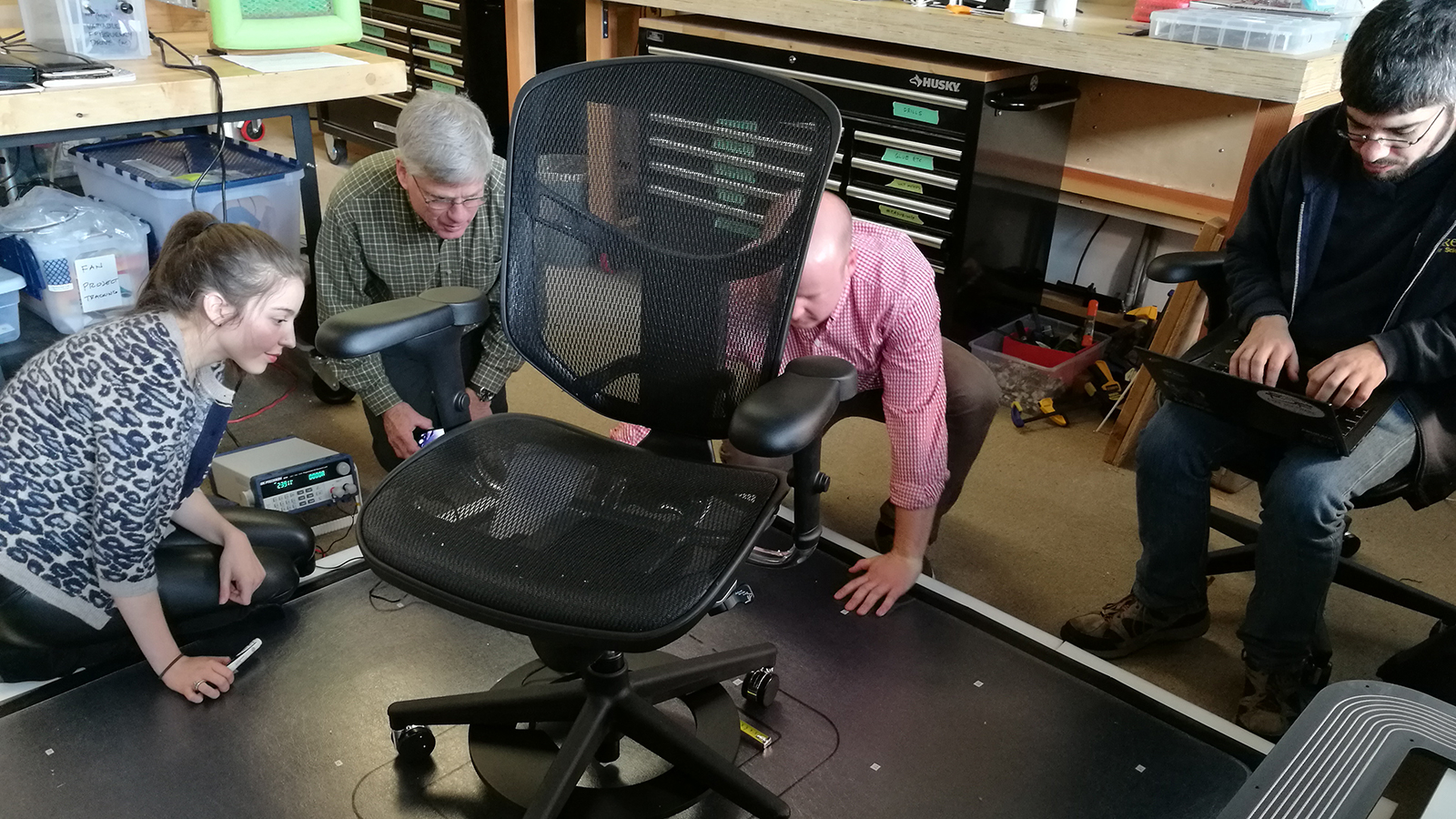Developing the next generation of personal comfort devices.
Status: Current
Funding Sources: U.S. DOE ARPA-E DELTA Program (Delivering Efficient Local Thermal Amenities) Industry In-Kind Support
Project Objective
The goal of this project is to develop and test cordlessly powered personal comfort devices, and work with industry to define a technology-to-market strategy to enable adoption.
Significance to Industry
CBE has shown through fundamental human subject testing that the most efficient ways for providing personalized thermal comfort for office occupants are via the feet, torso, hands, and face.
The underlying premise is that for personal comfort systems to compete with conventional HVAC, occupants should feel as normal as possible in working environments using personal cooling and heating. Occupants should not be entangled by cords or burdened by batteries or battery-charging tasks in order to attain the level of comfort they are accustomed to experiencing effortlessly via conventional HVAC.
Research Approach
CBE is collaborating with the Department of Electrical Engineering and Computer Science (EECS) and WiTricity to develop and integrate highly-resonant wireless power transfer (HRWPT) technology into office workstations to seamlessly provide local thermal amenities to the feet, hands, face and trunk of occupants. Use of HRWPT will dramatically reduce energy use and cord-clutter while providing personal comfort without the need for special clothing, large batteries or tethered equipment.
Leveraging ongoing efforts to develop wireless charging systems for consumer electronics in the same power range, the project team will develop and test four different devices: two will powered by a low-profile floor mat, and two by an underdesk system to transmit power to two desktop devices. The floor mat transmitting system will power heated insoles for the occupant and a charger for a battery-powered heated/cooled office chair. The under-desk transmitters will power a heated/cooled keyboard wrist-pad and a small moveable DC desk fan.
CBE will conduct a detailed investigation of heat transfer mechanisms, and test all four devices for ergonomic usability and thermal comfort performance at and beyond the ambient temperature range of 66-79ºF.
Project partners Merck (Dr. Scholl’s), Staples, and Personal Comfort Systems will assist with product testing, consumer evaluations, and targeted marketing.
Publications and Reports
Hoyt, T., E. Arens, and H. Zhang. 2014. Extending air temperature setpoints: Simulated energy savings and design considerations for new and retrofit buildings. Building and Environment. http://dx.doi.org/10.1016/j.buildenv.2014.09.010https://escholarship.org/uc/item/13s1q2xc
Zhang, H., E. Arens, D. Kim, E. Buchberger, F. Bauman, and C. Huizenga, 2010. Comfort, perceived air quality, and work performance in a low-power task-ambient conditioning system. Building and Environment, 45(1), pp. 29-39.
Hoyt, T., H. L. Kwang, H. Zhang, E. Arens, and T. Webster, 2009. Energy savings from extended air temperature setpoints and reductions in room air mixing. International Conference on Environmental Ergonomics, Boston, July.

